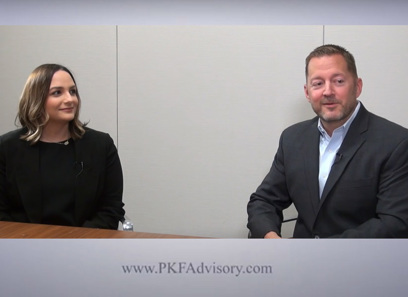M&A Outlook: Understanding the Key Drivers of Change in Global Mergers and Acquisitions
M&A Outlook: Understanding the Key Drivers of Change in Global Mergers and Acquisitions
Blog Article
The Effect of Mergers and Acquisitions on Market Characteristics and Competitors
The landscape of acquisitions and mergings presents a complex interaction in between cultivating development and possibly undermining competitive integrity within markets. As companies seek critical positionings to improve efficiency and advancement, the implications on customer selection and market rates warrant careful examination.
Summary of Mergers and Acquisitions
Mergers and purchases (M&A) play a pivotal duty in forming the landscape of modern-day organization, as firms seek to boost their one-upmanship and accomplish tactical purposes. M&A deals involve the loan consolidation of firms or assets via different economic purchases, consisting of mergers, where two companies combine to form a new entity, and procurements, where one firm acquisitions one more outright. These activities are driven by a myriad of aspects, such as the search of harmonies, diversification of product offerings, and the need to get in brand-new markets.
The M&A procedure normally includes a number of phases, consisting of tactical planning, due persistance, settlement, and combination (Emerging Market Opportunities). Firms carry out comprehensive analyses to identify potential targets that line up with their growth strategies and analyze the financial and functional ramifications of a purchase. Regulatory considerations likewise play an essential role, as antitrust legislations are created to stop monopolistic techniques that could damage competition
As organizations navigate the complexities of M&A, the outcomes can significantly affect stakeholders, consisting of shareholders, clients, and employees. Consequently, comprehending the characteristics of M&A is crucial for reviewing their effects within the more comprehensive context of market behavior and competitive positioning.
Favorable Impacts on Market Characteristics
The loan consolidation of companies via mergers and procurements can result in significant positive effects on market dynamics. Among the primary advantages is the enhancement of functional effectiveness. By integrating resources, firms can simplify processes, minimize redundancies, and achieve economic climates of range, eventually decreasing expenses and improving earnings. This performance can convert right into reduced rates for customers, fostering a much more competitive market setting.

Moreover, enhanced market share arising from mergers can give companies with better bargaining power with providers and distributors, facilitating boosted terms and conditions that can benefit the overall supply chain.
Negative Repercussions for Competition

In addition, the elimination of competitors through purchases can stifle development. When principals merge, smaller firms may struggle to complete, leading to a homogenization of solutions and items. The resultant absence of competitors can create an environment where staying companies have less motivation to buy r & d.
Additionally, mergers can develop obstacles to access for new companies, as the merged entity might utilize its boosted sources to control the marketplace. This can deter possible entrants, thus restricting competition and technology in the lengthy term.
Ultimately, while mergings and procurements can supply strategic advantages, their possible to threaten competition necessitates mindful consideration of their wider implications on the market characteristics. The balance between development and affordable honesty remains an essential worry in reviewing such company techniques.
Governing Considerations and Oversight
Regulative structures play a critical role fit the landscape of acquisitions and mergings, ensuring that market dynamics remain affordable and fair. These frameworks are developed to stop anti-competitive actions and to shield customer rate of interests. Governing bodies, such as the Federal Profession Payment (FTC) in the United States and the European Commission in the EU, evaluate suggested procurements and mergings based on their potential influence on competitors within the market.
The analysis procedure includes a thorough investigation of the marketplace share, potential for monopolistic methods, and the total financial ramifications of the deal. Regulators commonly enforce conditions or need divestitures to reduce problems over reduced competition, ensuring that the merged entity does not dominate the marketplace unjustly.
This collective approach helps to promote a well balanced regulative environment that advertises advancement while securing competitive practices. Inevitably, efficient regulative considerations are essential in preserving market integrity and motivating healthy competition in the face of developing business landscapes.
Study and Real-World Examples
Often, study of significant mergers and purchases highlight the profound results these deals can have on market dynamics. The 2000 merger between AOL and Time Detector functions as an archetype, where the prepared for synergies dropped short, causing an extreme decline in investor value. This situation emphasizes just how cultural misalignments and overestimation of market potential can interfere with competition.
In comparison, the purchase of WhatsApp by Facebook in 2014 exemplifies an effective integration that reshaped the communication landscape. Emerging Market Opportunities. Facebook leveraged WhatsApp's user base to improve its solution offerings, properly raising its market supremacy while maintaining competitors in the messaging industry
Another considerable case is the merging of Exxon and Mobil in 1999, which created one of the M&A Outlook for 2025 world's biggest oil business. This debt consolidation resulted in greater effectiveness however increased problems concerning minimized competitors in the energy market, triggering governing scrutiny.
These instances highlight the complicated interplay in between mergings and purchases and market dynamics, showcasing both the prospective advantages and mistakes that can arise, eventually forming competitive landscapes throughout markets.
Final Thought
Mergers and acquisitions play a crucial duty in forming market dynamics and competitors. Effective governing oversight is essential to guarantee that the advantages of M&An activities are made the most of while alleviating unfavorable effects on market competition.
One major worry is the capacity for lowered market competitors, as mergers typically lead to the loan consolidation of market power among fewer gamers. Regulatory bodies, such as the Federal Profession Compensation (FTC) in the United States and the European Payment in the EU, assess suggested acquisitions and mergings based on their prospective influence on competition within the market.

Mergers and procurements play a critical duty in shaping market characteristics and competition. Reliable regulative oversight is important to guarantee that the benefits of M&An activities are taken full advantage of while minimizing unfavorable influences on market competition.
Report this page